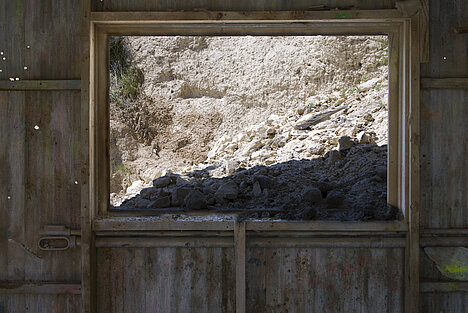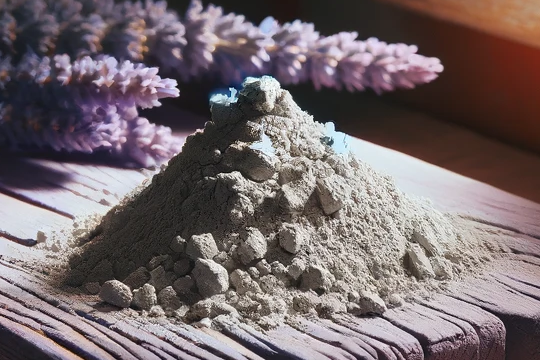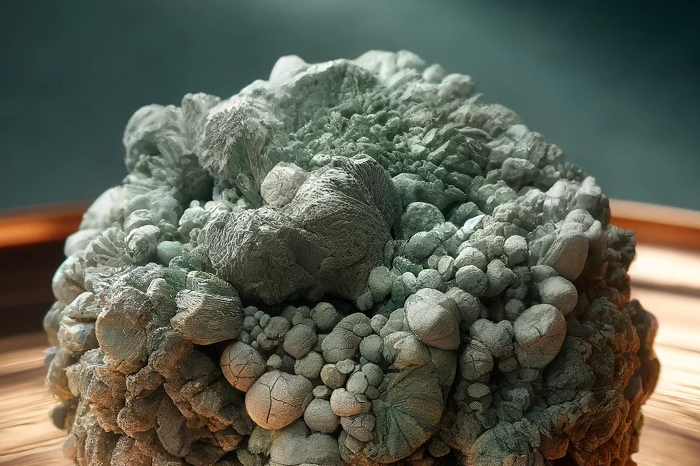Diatomaceous earth

What is diatomaceous earth and how does it work against parasites?
Diatomaceous earth is a natural substance that contains no chemical additives. It is rich in silicon and other minerals that are important for the health of skin, hair and nails. Diatomaceous earth also has a special property: it has a mechanical effect against small arachnids and insects that can infest dogs, such as fleas, ticks and mites.
Under the microscope, the shells of the diatoms have sharp edges that scratch the wax layer on the parasites' chitinous shell. This causes the parasites to lose moisture and dry out. Diatomaceous earth therefore kills the parasites without using toxins or promoting resistance. It is therefore a good alternative to chemical products, which can often have side effects.
How is diatomaceous earth used on dogs?
Diatomaceous earth can be used both externally and internally on dogs. For both applications, however, you should only use food-grade diatomaceous earth that does not contain any harmful substances such as arsenic. You should also make sure that neither you nor your dog inhale the powder, as it can irritate the respiratory tract.
External application
To treat dogs with diatomaceous earth against fleas or ticks, you can rub a small amount of the powder into the dog's coat. Be sparing and do not create a cloud of dust. You can also rub the powder against the grain to spread it better. The treatment should be repeated every few days until the parasites have disappeared.
Diatomaceous earth can also be sprinkled on the dog's favorite places or in the hiding places of the parasites to combat them there. For example, the powder can be applied to the dog's bed, carpet or upholstered furniture and massaged in gently. After a few hours, the powder can be vacuumed or beaten out again.
Internal use
Diatomaceous earth can also be added to the dog's food to strengthen it from the inside and protect it against internal parasites such as worms. The dosage depends on the dog's weight. Small dogs up to 5 kg get 4 grams of diatomaceous earth per meal, medium-sized dogs from 10 to 35 kg get 8 grams (2 teaspoons) and large dogs over 35 kg get up to 16 grams (2 tablespoons). The cure should be carried out over several weeks.
Diatomaceous earth has a neutral taste and is well accepted by most dogs. However, it can also be mixed with a little water or broth to make it easier to mix into the food.
Diatomaceous earth is a natural mineral rich in silicon that works mechanically against parasites such as fleas, ticks and mites by scratching their chitinous shells and drying them out. It is used without chemical additives and has no known side effects. Diatomaceous earth can be sprinkled externally on the dog's coat or in its environment, as well as added internally to the food to combat internal parasites. The dosage depends on the dog's weight and should be administered over several weeks. It is important to use food-grade diatomaceous earth and to avoid inhaling the powder.
If you notice any signs of hypersensitivity or poisoning in your dog, you should see your vet immediately. We are not a substitute for a vet, but we try to be as accurate as possible. Every dog reacts differently and we recommend you get a second opinion or consult your vet if in doubt.
Stay healthy and take good care of your four-legged friend!😊
Similar to Diatomaceous earth
Bentonite is a fine powder consisting of various clay minerals. The most important are montmorillonite, kaolinite and illite. These minerals have a platelet-like structure that can swell in water...
Zeolite is a naturally occurring, microporous mineral with a unique crystalline structure consisting of aluminum, silicon and oxygen. Its special ability to exchange ions and adsorb molecules makes...
A natural clay with unique properties Montmorillonite belongs to the group of smectite clay minerals and is characterized by its ability to absorb water and other substances between the clay...
Activated charcoal is made from wood, coconut shells, bones or other organic materials. These are heated and treated with oxygen or water vapor to create small pores. This creates a very large...



